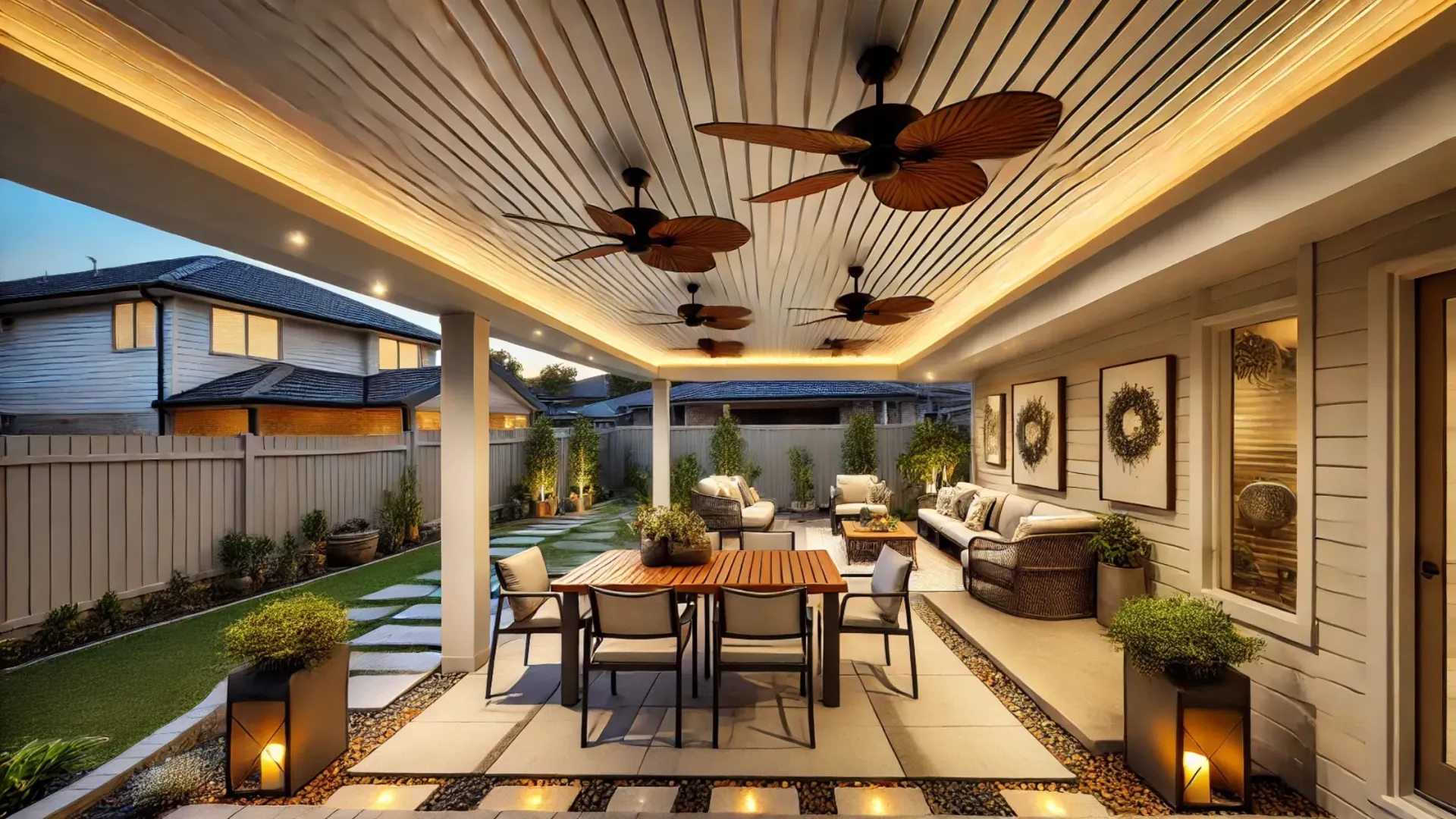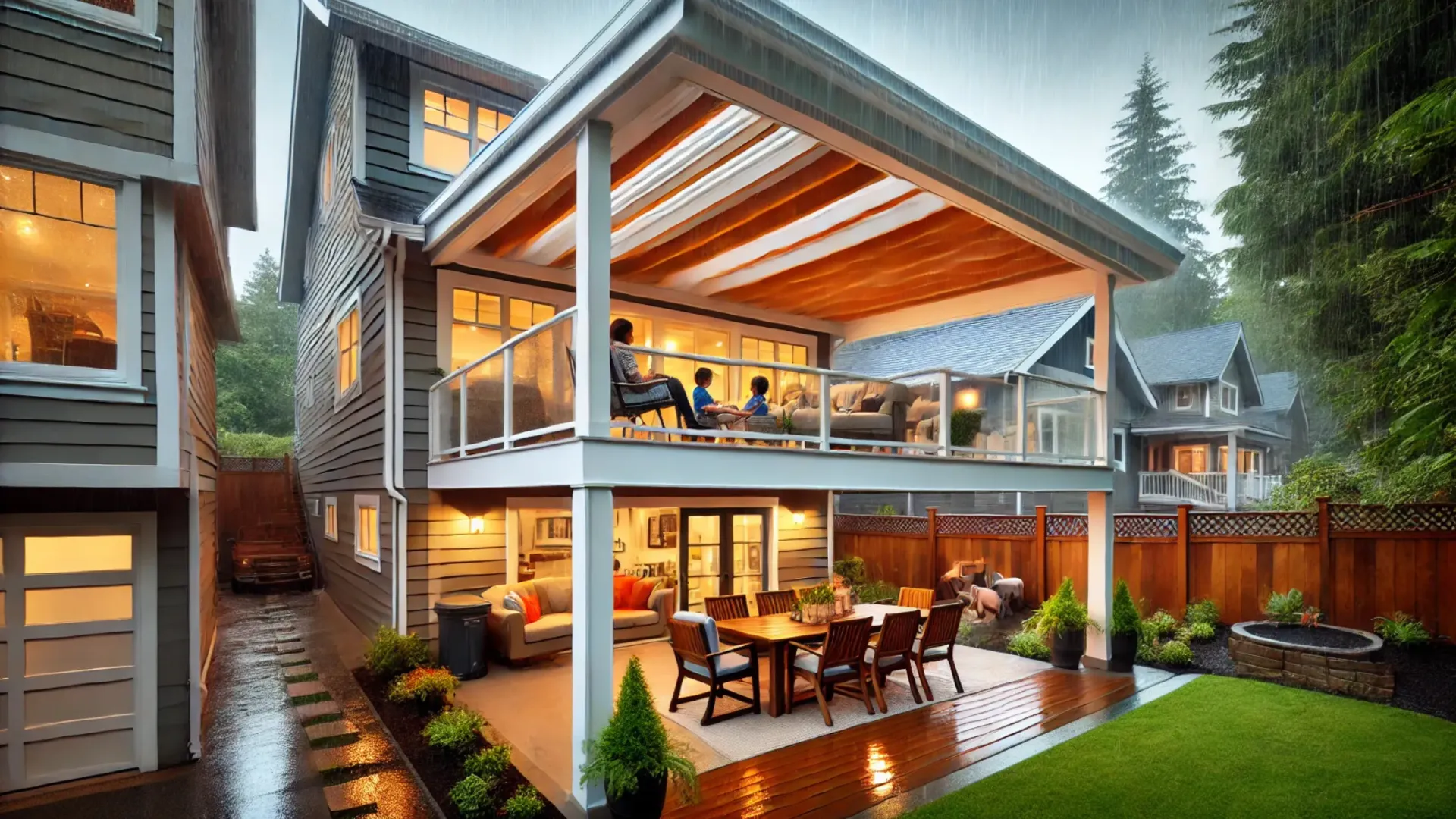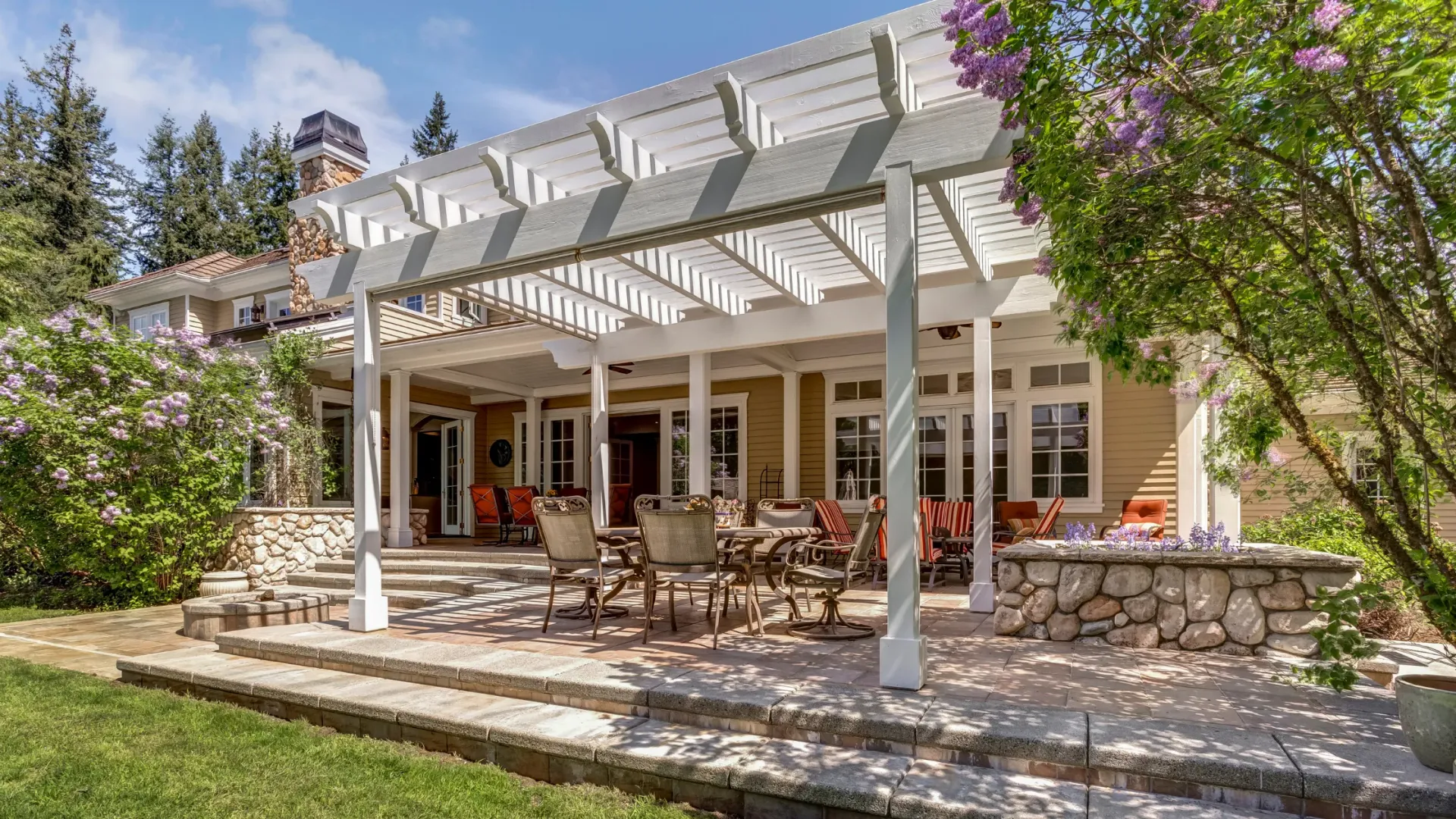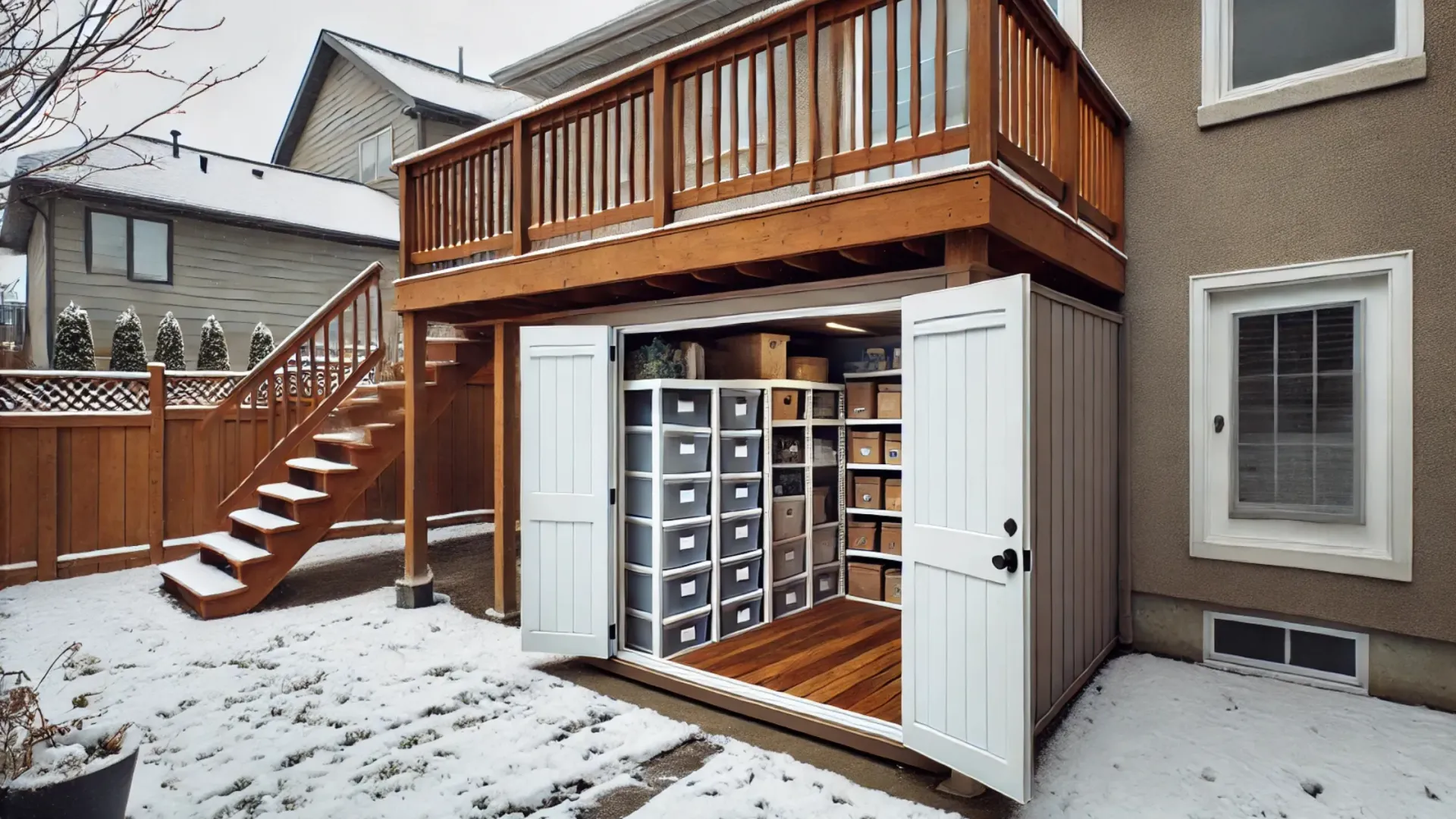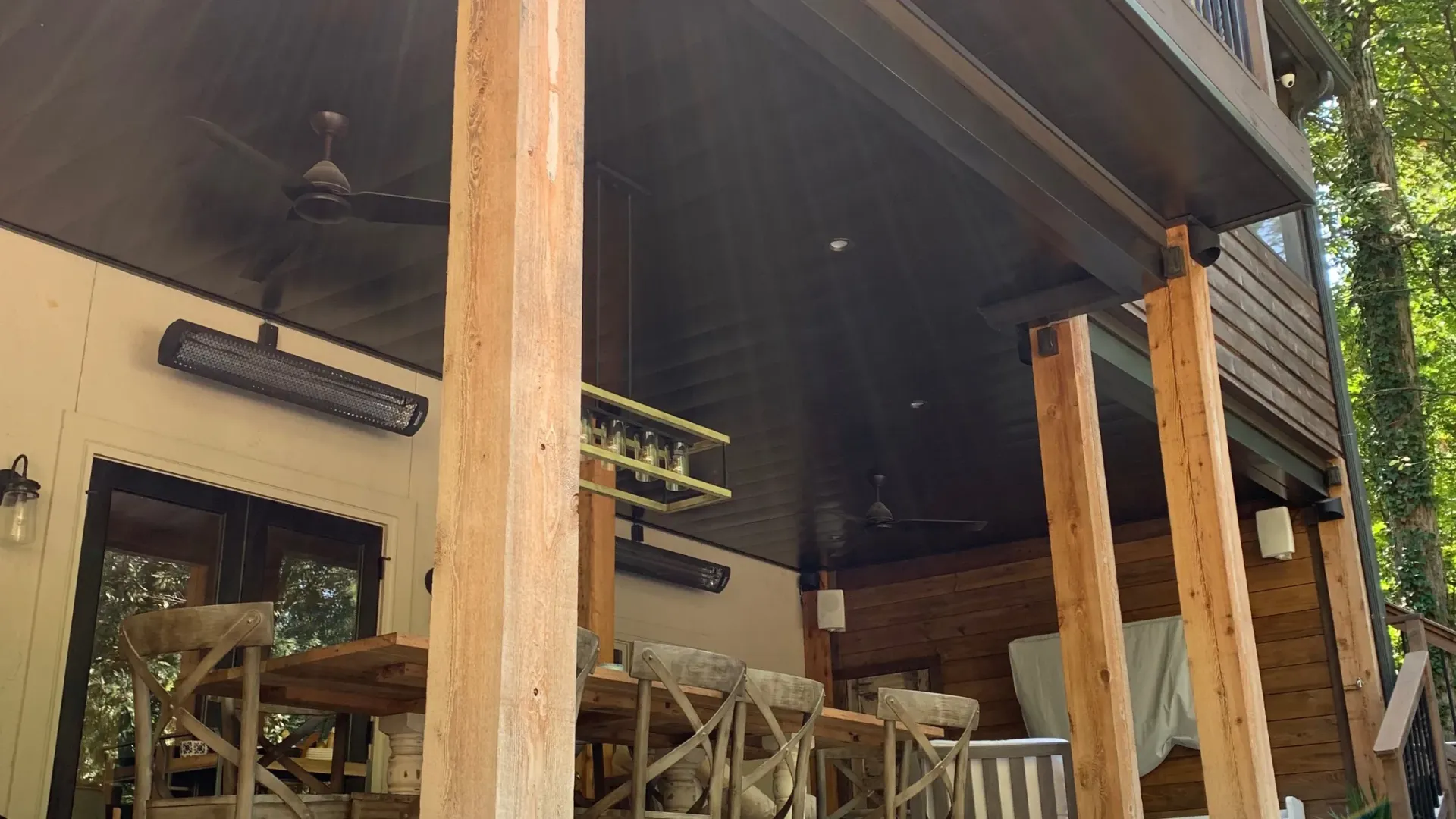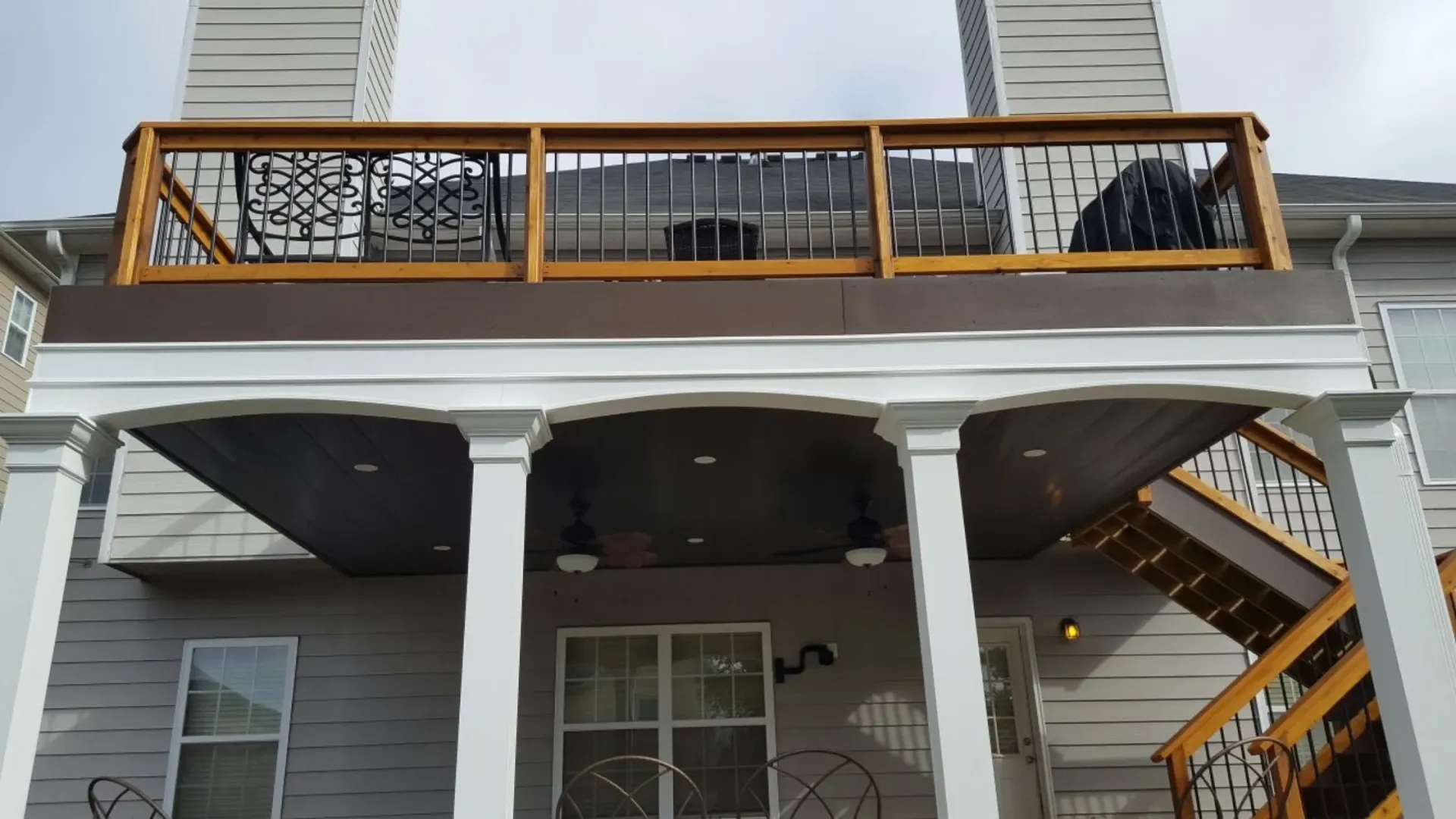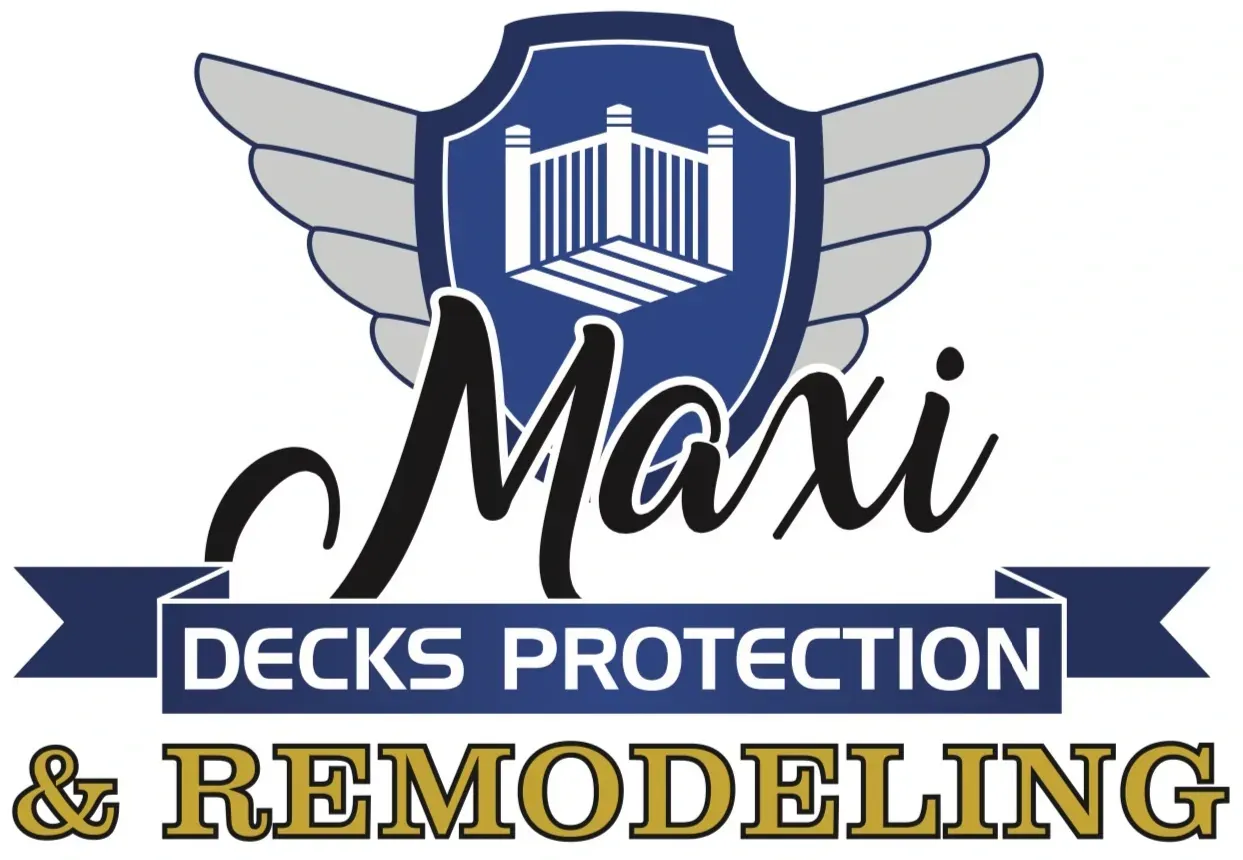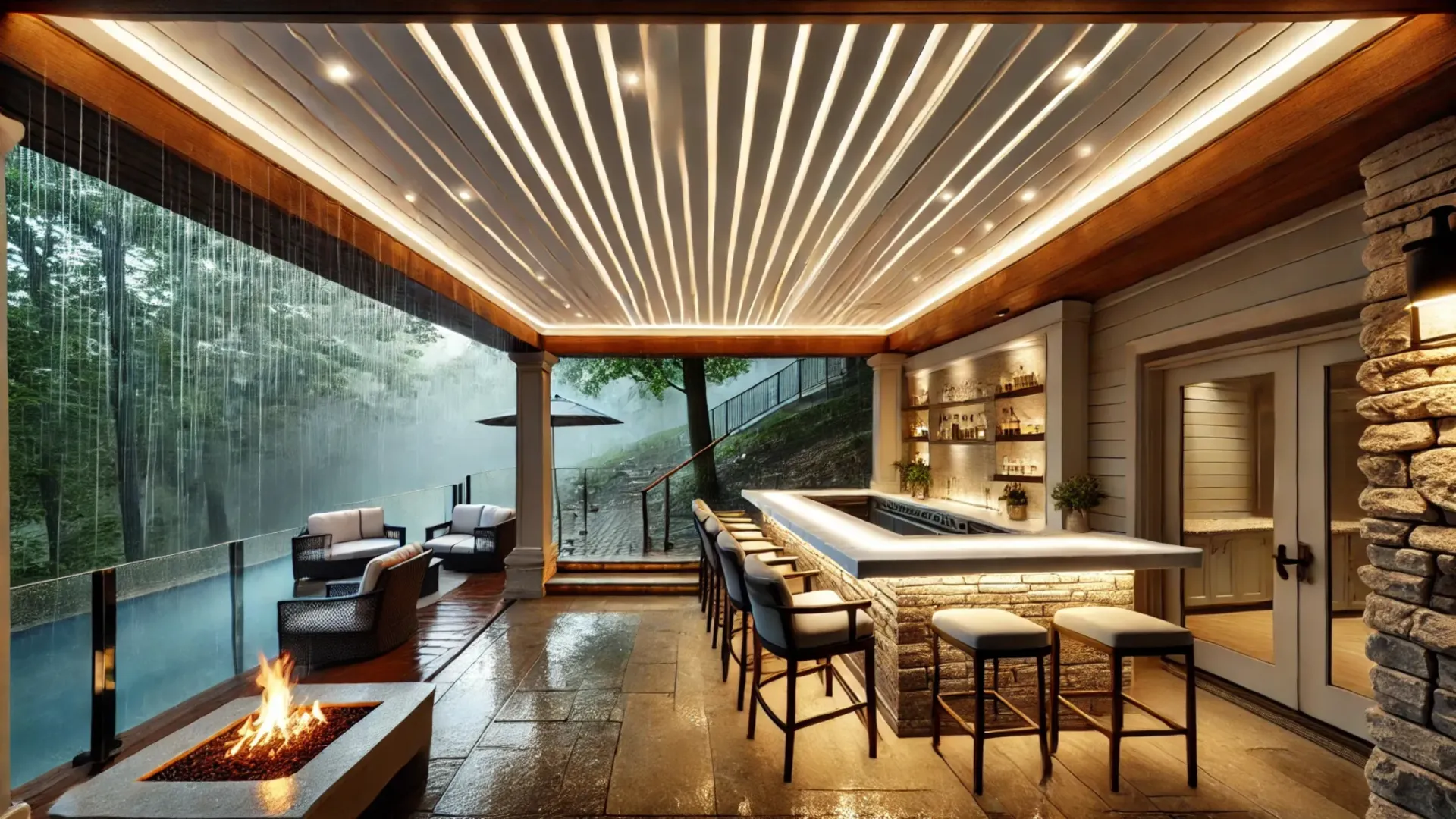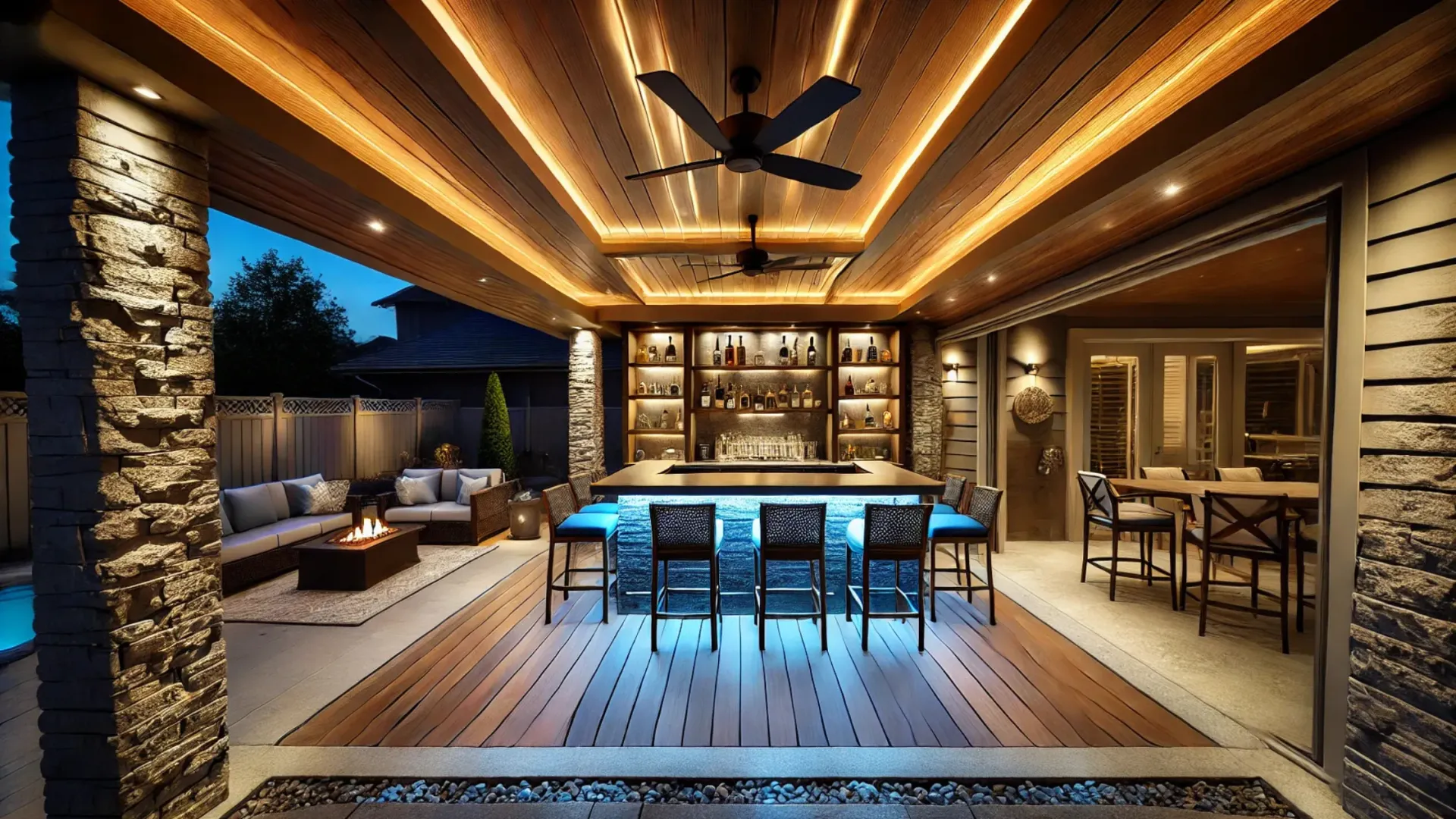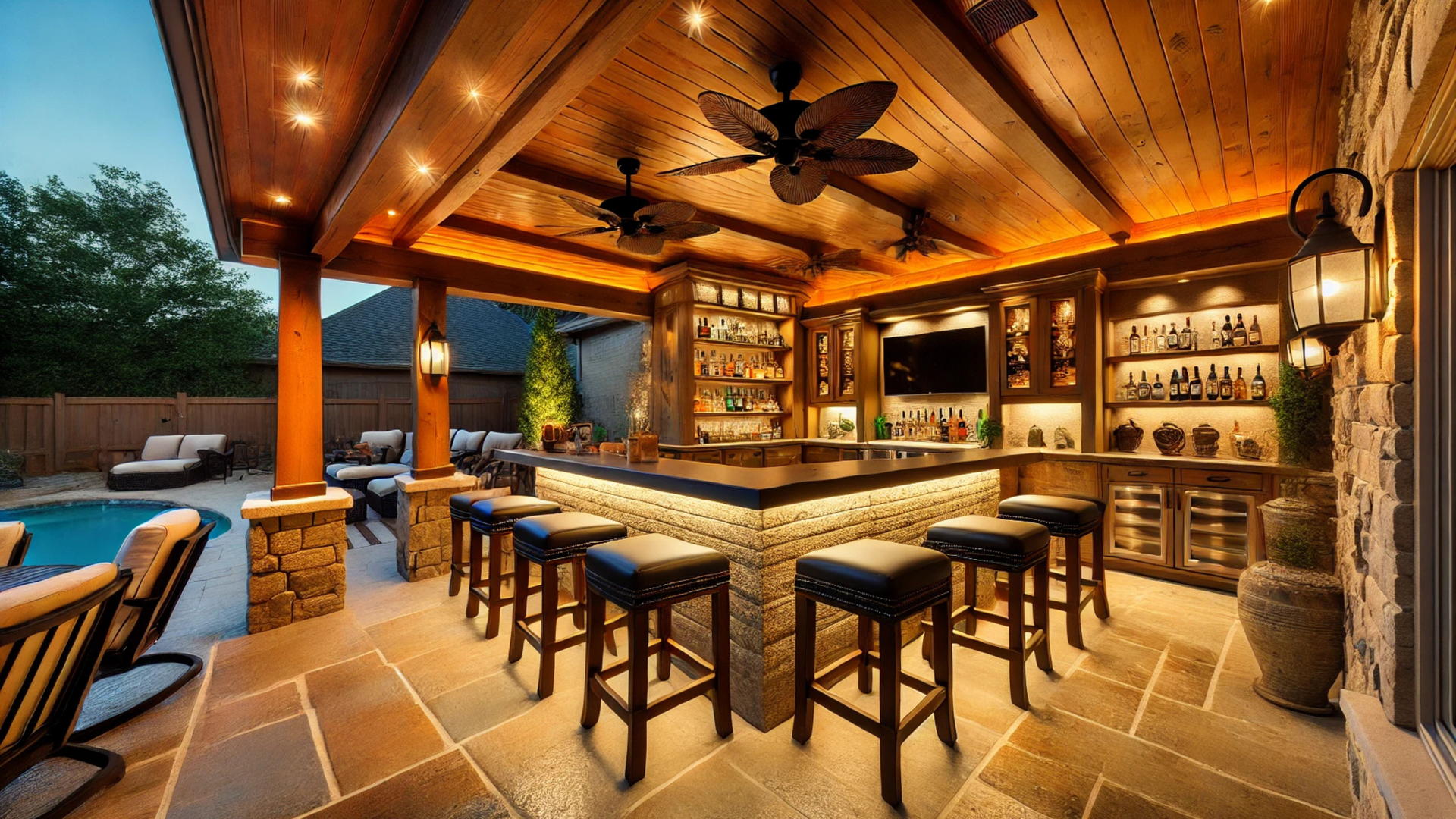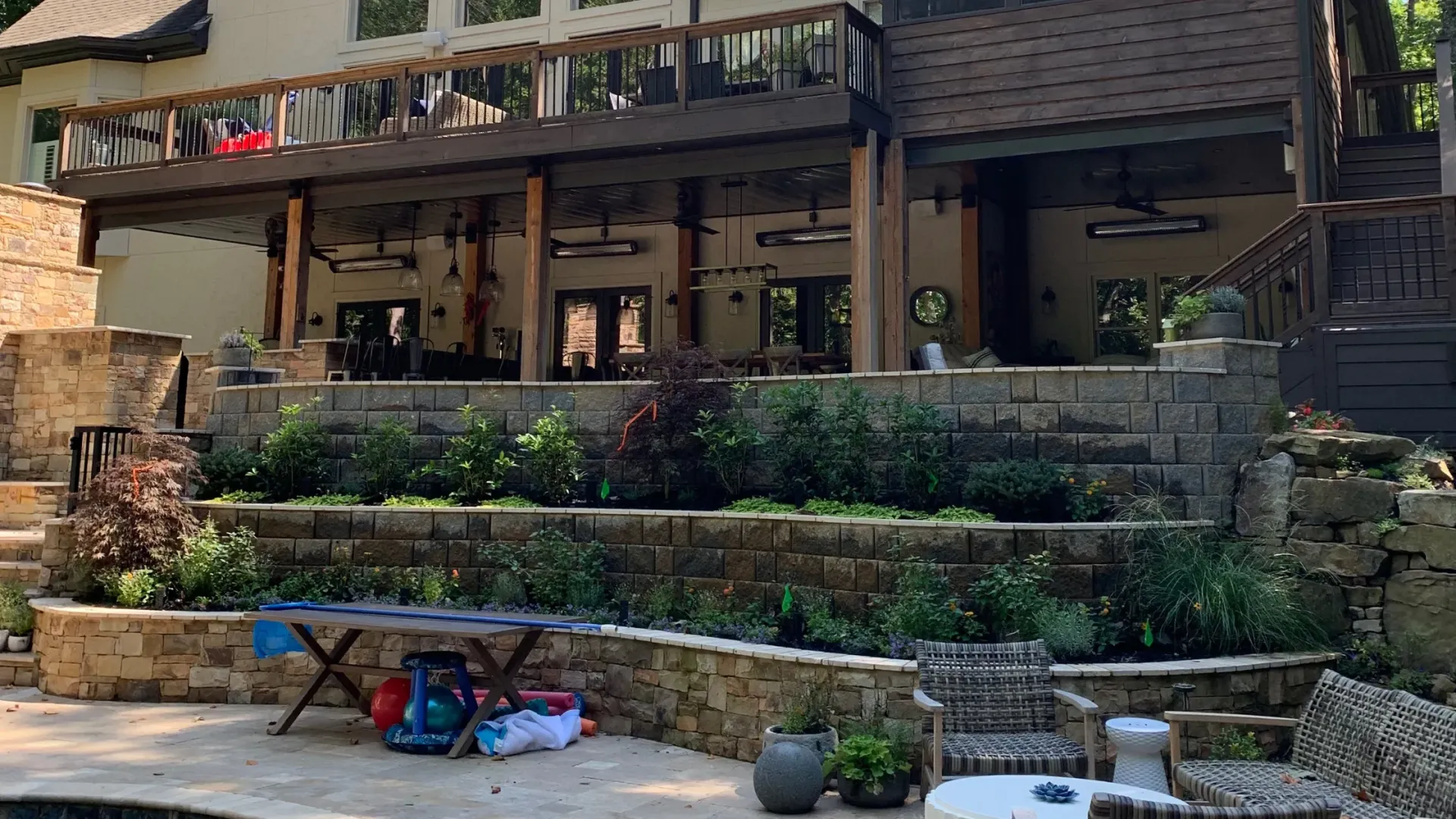Choosing the Right Under-Deck Ceiling for Your Outdoor Living Space
Transforming the space beneath your elevated deck can unlock a wealth of possibilities for outdoor living. One of the best ways to create a functional, dry area under your deck is by installing an under-deck ceiling, also known as a soffit.
This innovative solution not only protects the area below from water damage but also adds a polished finish that enhances the overall aesthetic of your outdoor space.
But how do you choose the right materials, style, and type for your under-deck ceiling? This guide will help you understand the options available and select the best solution for your needs.
What Is an Under-Deck Ceiling?
An under-deck ceiling is an installed drainage system that channels water away from the deck above, creating a dry, usable space below. These systems typically consist of gutters, panels, and soffits that work together to collect rainwater and direct it away from the foundation of your home.
Beyond practical functionality, an under-deck ceiling enhances the visual appearance of your space, making it an ideal foundation for outdoor living features like lounges, kitchens, play areas, or entertainment rooms. With the right system and materials, you can make this area as stylish and functional as any room inside your home.
Why Invest in an Under-Deck System?
Whether you're building a new deck or upgrading an existing one, installing an under-deck ceiling has several advantages:
- Waterproofing: Keeps the space beneath your deck dry, preventing water damage, mold growth, and structural concerns.
- Expanded Living Space: Creates the perfect foundation for additional functionality—think dining areas, hot tubs, or even a home office.
- Enhanced Property Value: A polished under-deck system makes your home more appealing to buyers and increases its overall worth.
- Improved Aesthetics: With a variety of styles and finishes available, you can elevate the look and feel of your home’s exterior.
Material Options for Your Under-Deck Ceiling
Choosing the right material is crucial for ensuring that your under-deck ceiling meets your specific needs in terms of functionality, durability, and visual appeal. Below, we break down the most popular options and their benefits and challenges.
1. Aluminum Under-Deck Ceilings
Benefits:
- Exceptional durability; resistant to rot, rust, and cracking.
- Requires minimal upkeep–no repainting necessary.
- Fire-resistant and water-repellent, ensuring lasting performance.
- Excellent ventilation capabilities.
- Easy to clean and maintain.
Challenges:
- May require professional installation due to complexity.
- Prone to dents and scratches if not handled carefully.
- Harder to cut during installation compared to vinyl.
2. Vinyl Under-Deck Ceilings
Benefits:
- Budget-friendly and widely available.
- Offers a range of colors and textures for versatile design.
- Resistant to insect infestations and will not corrode.
- Water-repellent and weather-durable.
Challenges:
- Requires annual power washing to maintain appearance.
- Mold can develop in damp environments if not cleaned.
- Prolonged exposure to harsh sunlight may result in discoloration and brittleness.
3. Wood Under-Deck Ceilings
Benefits:
- Natural and environmentally friendly material.
- Highly customizable; can be painted or stained to match existing decor.
- Provides a visually stunning aesthetic.
Challenges:
- Requires extensive maintenance to prevent warping, rot, and decay.
- More expensive and time-consuming to install.
- Susceptible to moisture-related issues like splitting and fungal growth.
4. Fiber Cement Under-Deck Ceilings
Benefits:
- Resistant to mold, mildew, and insect damage.
- Can be manufactured to mimic wood, vinyl, or other materials.
- Unparalleled durability; withstands harsh weather conditions.
- Fire-resistant and low-maintenance over its lifespan.
Challenges:
- Higher initial cost and requires professional installation.
- Pre-painted models might need recoating for long-term use.
5. Steel Under-Deck Ceilings
Benefits:
Extremely sturdy and durable, handling heavy impacts well.
Resistant to insects, mold, and fire, making it a long-term solution.
Available in various finishes and recyclable at the end of its life.
Challenges:
Vulnerable to rust if protective coatings are compromised.
More difficult and time-intensive to install due to its weight and thickness.
Among the pricier options available.
6. Hardboard Under-Deck Ceilings
Benefits:
Strong and affordable, a good alternative to wood.
Offers a range of natural finishes and textures.
Less maintenance is required compared to traditional wood options.
Challenges:
Susceptible to cracking over time.
May need painting or staining for protection against elements.
Requires occasional maintenance to prevent pest infestations.
How to Choose the Right Under-Deck Ceiling for Your Home
When narrowing down your options, consider the following factors:
Durability: If you live in an area with extreme weather conditions or high humidity, prioritize materials like aluminum or fiber cement for their robust resilience.
Maintenance: Homeowners seeking low-maintenance solutions should opt for aluminum or steel over wood or vinyl.
Aesthetic Appeal: For a warm, natural vibe, wood or fiber cement ceilings are great choices. Conversely, aluminum and vinyl offer sleek, contemporary finishes.
Budget: Assess the upfront costs of materials and installation alongside long-term expenses for upkeep and repairs.
Transforming Your Outdoor Space
Imagine enjoying a cool summer evening on your custom-designed patio, complete with comfortable seating and thoughtful lighting. Whether you're creating a serene retreat or the ultimate entertainment area, the right under-deck ceiling will ensure your space stands the test of time while looking fantastic.
By selecting an under-deck system that matches your lifestyle and preferences, you'll make the most out of your elevated deck while protecting your investment for years to come.
Take the Next Step in Redesigning Your Outdoor Living
Upgrading your elevated deck with an under-deck ceiling is an investment in both style and functionality. By selecting materials that align with your vision—whether it’s durable aluminum, stylish wood, or versatile fiber cement—you can create the outdoor oasis of your dreams.
Got questions about choosing the best under-deck ceiling materials or need professional advice on installation? Contact our team of home improvement experts today and turn your vision into reality.
